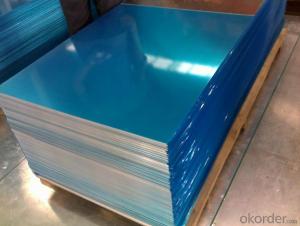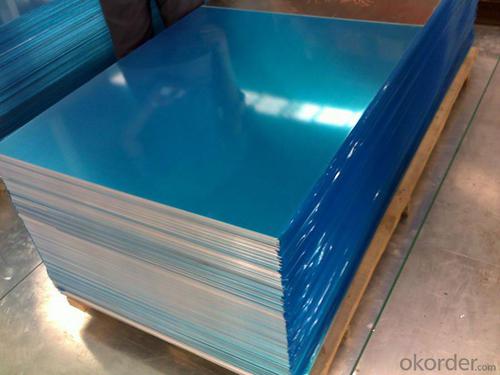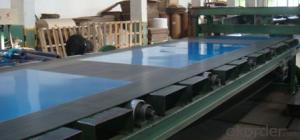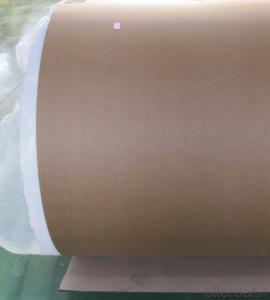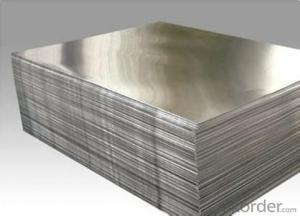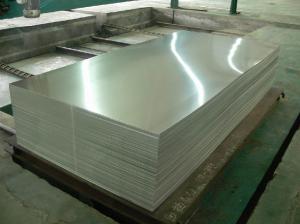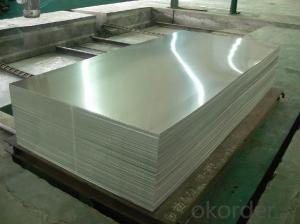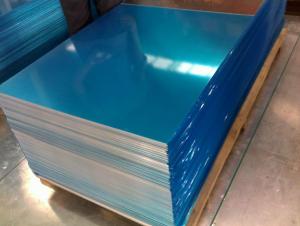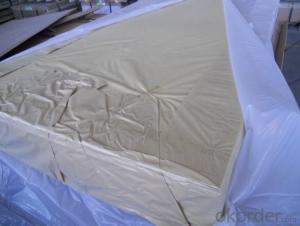Aluminum Sheets for Sale Missouri - 1xxx Mill Finished
- Loading Port:
- China Main Port
- Payment Terms:
- TT or LC
- Min Order Qty:
- 5 m.t.
- Supply Capability:
- 10000 m.t./month
OKorder Service Pledge
OKorder Financial Service
You Might Also Like
1.Structure of Aluminum Sheets 1XXX Mill Finished Description
Aluminum Sheets 1XXX Mill Finished is widely used for electronics, instruments, lighting decoration, packing industry, house decoration, curtain wall, honeycomb-core panel, sandwich panel, aluminum composite panel and aluminum composite pipes.
2.Main Features of Aluminum Sheets 1XXX Mill Finished
• Superior quality of raw material
• Reasonable and stable chemical composition
• Accurate tolerance
• Goode mechanical property
3.Aluminum Sheets 1XXX Mill Finished Images

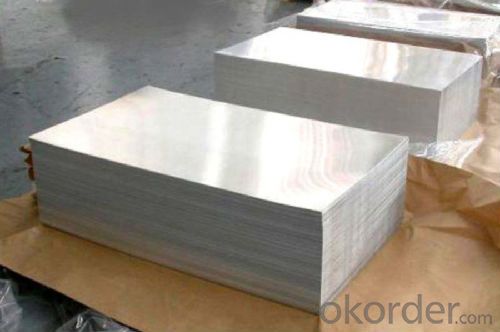

4.Aluminum Sheets 1XXX Mill Finished Specification
| Alloy | AA1xxx (AA1050, AA1060, AA1070, AA1100 etc. |
| Temper | H14,H16, H18, H22, H24, H26, H32, O/F |
| Thickness | 0.2mm-100mm |
| Width | 30mm-1700mm |
| Standard | GB/T 3880-2006 |
5. FAQ of Aluminum Sheets 1XXX Mill Finished
A.How to guarantee the quality?
Customers are welcome to our mill to visit and check the products. Besides, we can arrange a third party to test Aluminum Sheets 1XXX Mill Finished products.
B. Now which countries do you export your goods?
Now we export to South East Asia,Africa, North America,South America ect.
- Q: An aluminum engine block has a volume of 4.77 and a mass of 12.88 .
- Aluminum okorder /
- Q: The which temperature the aluminum evaporates in vacuum?
- Aluminum boils at 2519 °C (4566 °F) at normal pressure. In a vacuum, it might boil (a little) at 808 °C, but actually this is better known as subliming.
- Q: Is it possible to construct furniture using aluminum sheets?
- <p>Yes, you can use aluminum sheets to make furniture. Aluminum is a lightweight, durable, and corrosion-resistant material that is often used in modern furniture design. It can be easily shaped and welded, making it suitable for a variety of furniture pieces such as tables, chairs, and shelving. However, it's important to consider the design and structural integrity, as well as the finish and comfort, when creating furniture with aluminum. It's also advisable to use appropriate tools and techniques to ensure safety and quality in the construction process.</p>
- Q: I get to do an aluminum blank for a fence and I am curious whether I can put slots in it with the router?I am not sure how thick it is, may say 3/16's.
- Yes you can use a router on aluminium. Use some kind of a fence, a piece of angle iron or a block of hardwood. Use a new bit, an old dull one will cause you problems. Pre-drill smaller holes than the slot width at each end of the slot. Stay back away from the end of the slot about 1/32 of an inch. Make several passes, at a depth of about 1/16 of an inch, per pass. If you can, make the slot with a bit smaller than the finished slot width. Use a 3/16 bit for a 1/4 inch slot. Use a 5/16 bit for a 3/8 inch slot. This will give cleaner slot edges and allow you to accurately make the slot width that you want. You can do this dry, but a little WD-40 oil will give even cleaner slot edges. Also climb mill the last pass on each slot edge to give a better/ smother edge. Climb Milling is pushing the router backwards of the way you normally travel in wood. Ben
- Q: I have a specific design I'd like to cut out of thin sheet metal (aluminum or tin) and I'm wondering how to make it more sturdy. The sheet metal is a bit flimsy. Can I strengthen it by heating it up (butane torch) and cooling it quickly?
- This Site Might Help You. RE: Can you temper aluminum or tin? I have a specific design I'd like to cut out of thin sheet metal (aluminum or tin) and I'm wondering how to make it more sturdy. The sheet metal is a bit flimsy. Can I strengthen it by heating it up (butane torch) and cooling it quickly?
- Q: Can the aluminum sheets be used for manufacturing ventilation systems?
- Yes, aluminum sheets can be used for manufacturing ventilation systems. Aluminum is a lightweight and durable material that has excellent corrosion resistance properties, making it suitable for ventilation applications. It can be easily formed and fabricated into various shapes and sizes, allowing for the customization of ventilation components. Additionally, aluminum is a good conductor of heat, which can be beneficial for HVAC systems that require efficient heat transfer.
- Q: Is this aluminium plate ceiling dark keel or bright keel?
- Although as upstairs said, now integrated ceiling are dark fitted keel. Can see your picture, elevation difference also has, should be bright install keel. This requires manufacturers and roof distribution. It is not important to open and install, but the key is where to enter such plates.If you think about the effect, consider getting the information from the scene.
- Q: This question asks for an explanation of the various types of coatings applied to aluminum sheets that are used outdoors.
- <p>Aluminum sheets used for exterior applications are often coated to enhance their durability, weather resistance, and aesthetic appeal. The different types of coatings include: 1. Anodizing, which creates a protective oxide layer on the aluminum surface. 2. Powder coating, a dry finishing process that provides a uniform and durable finish. 3. PVDF (Polyvinylidene Fluoride) coating, known for its excellent resistance to UV rays and chemicals. 4. Fluorocarbon coatings, which offer superior resistance to weathering and color retention. 5. Electrolytic coating, which involves the application of a thin protective layer through an electrochemical process. Each coating type has specific properties that make it suitable for different exterior applications and environmental conditions.</p>
- Q: Are aluminum sheets suitable for heat sinks?
- Yes, aluminum sheets are suitable for heat sinks. Aluminum is a lightweight and highly conductive metal, making it an excellent choice for dissipating heat. It has a high thermal conductivity, which means it can efficiently transfer heat away from the source and spread it across a larger surface area. Additionally, aluminum has good corrosion resistance, which is important for heat sinks that may be exposed to moisture or other environmental factors. The malleability and ease of fabrication of aluminum sheets also make them versatile for creating various heat sink designs to meet specific cooling requirements. Overall, aluminum sheets are widely used in heat sink applications due to their excellent thermal conductivity, lightweight nature, corrosion resistance, and ease of manufacturing.
- Q: How do you form curves or shapes in aluminum sheets?
- There are several methods to form curves or shapes in aluminum sheets. One common technique is called bending, where the sheet is clamped and then gradually bent using a mechanical press brake or a hammer. Another method is called roll forming, which involves passing the aluminum sheet through a series of rollers to achieve the desired shape. Additionally, aluminum sheets can be molded or pressed into curves or shapes using specialized tools or dies.
Send your message to us
Aluminum Sheets for Sale Missouri - 1xxx Mill Finished
- Loading Port:
- China Main Port
- Payment Terms:
- TT or LC
- Min Order Qty:
- 5 m.t.
- Supply Capability:
- 10000 m.t./month
OKorder Service Pledge
OKorder Financial Service
Similar products
Hot products
Hot Searches
Related keywords
